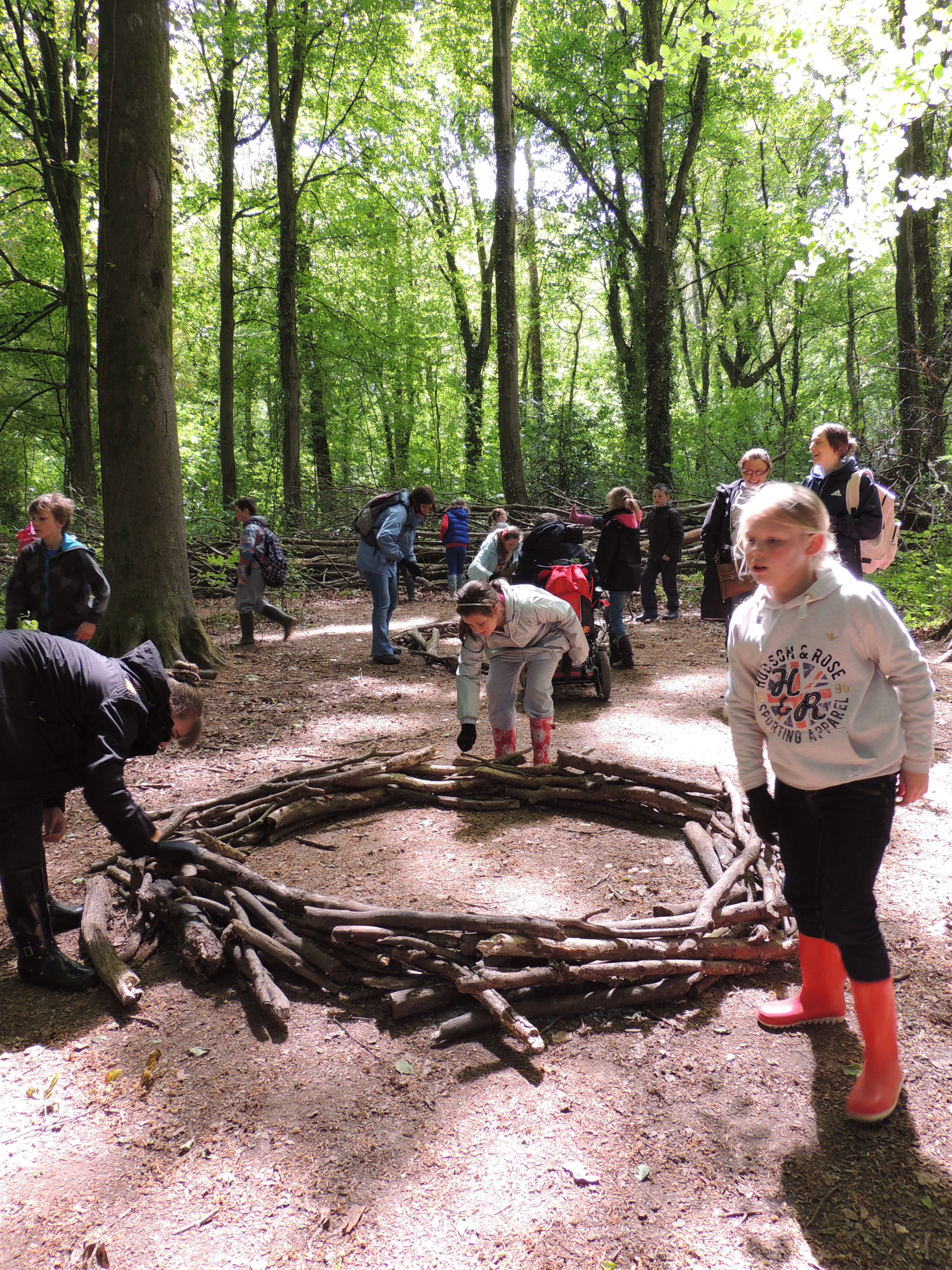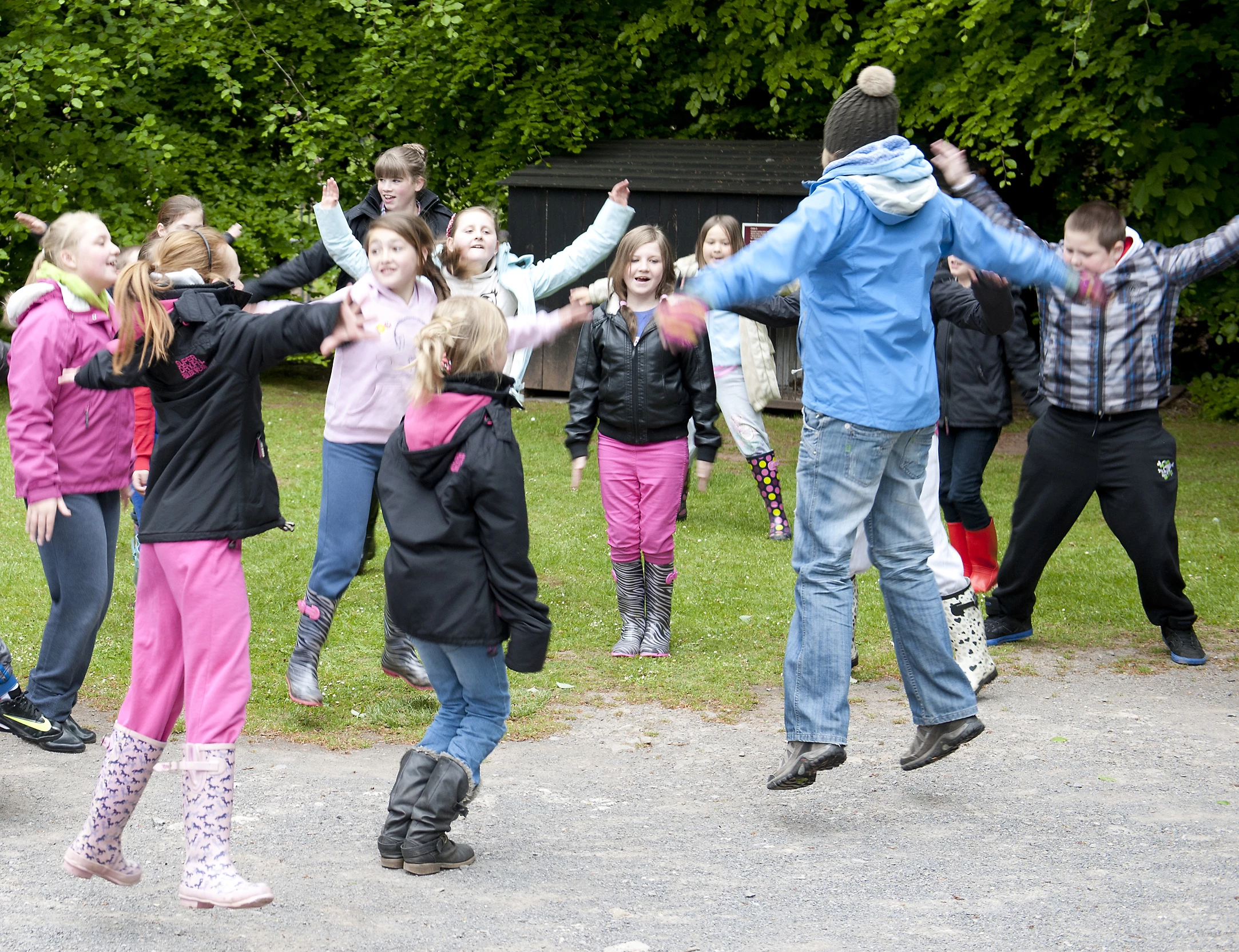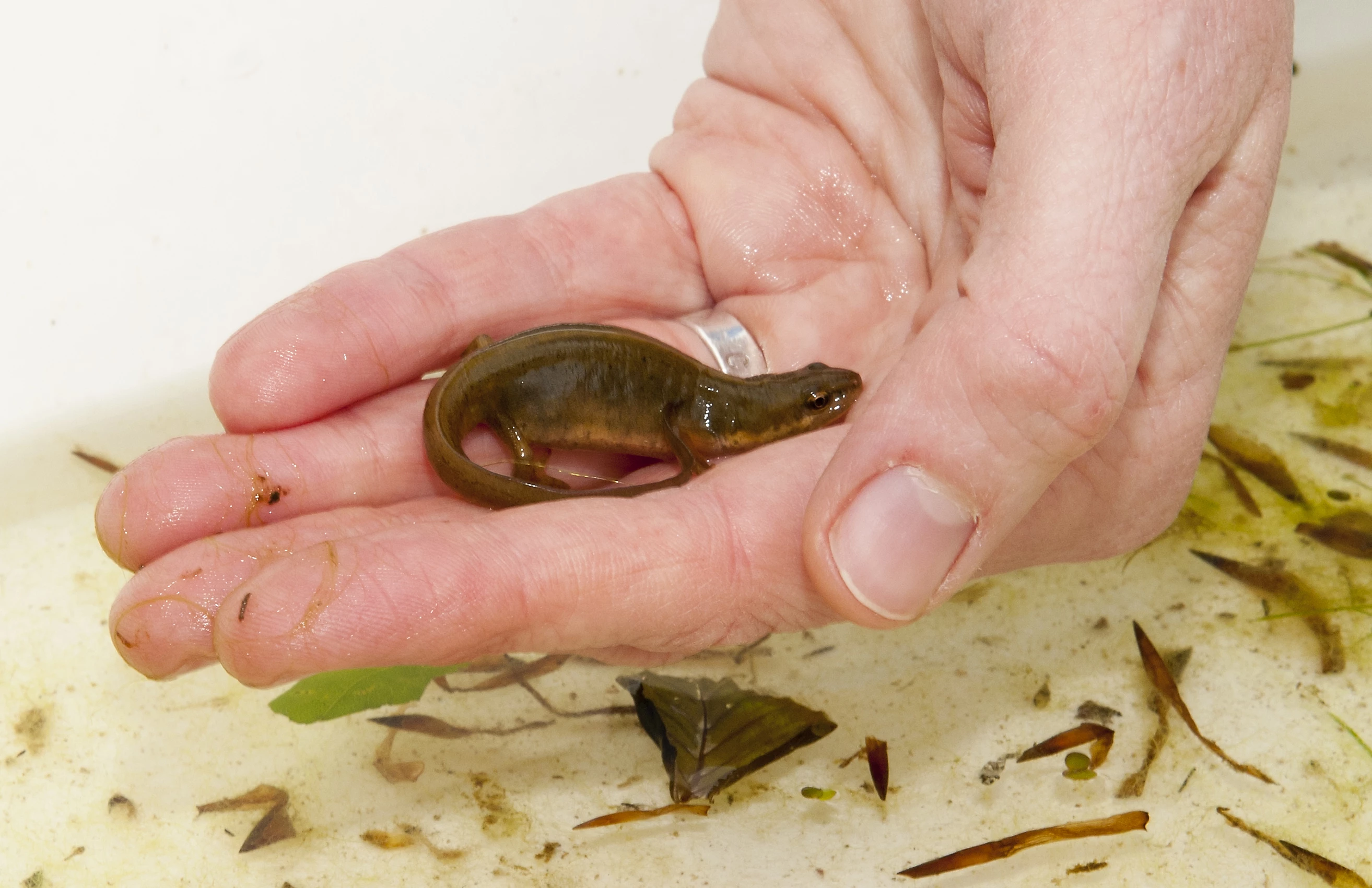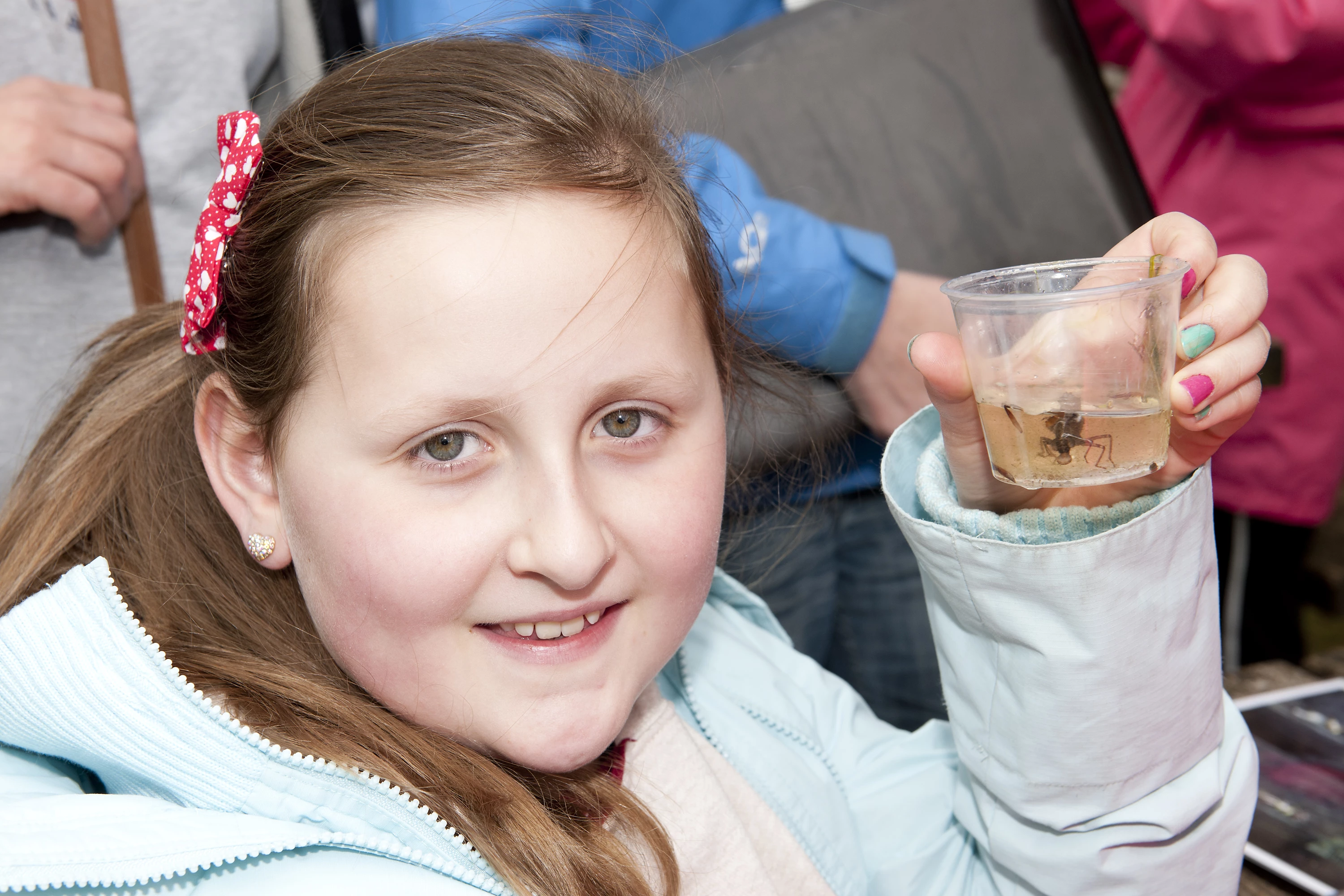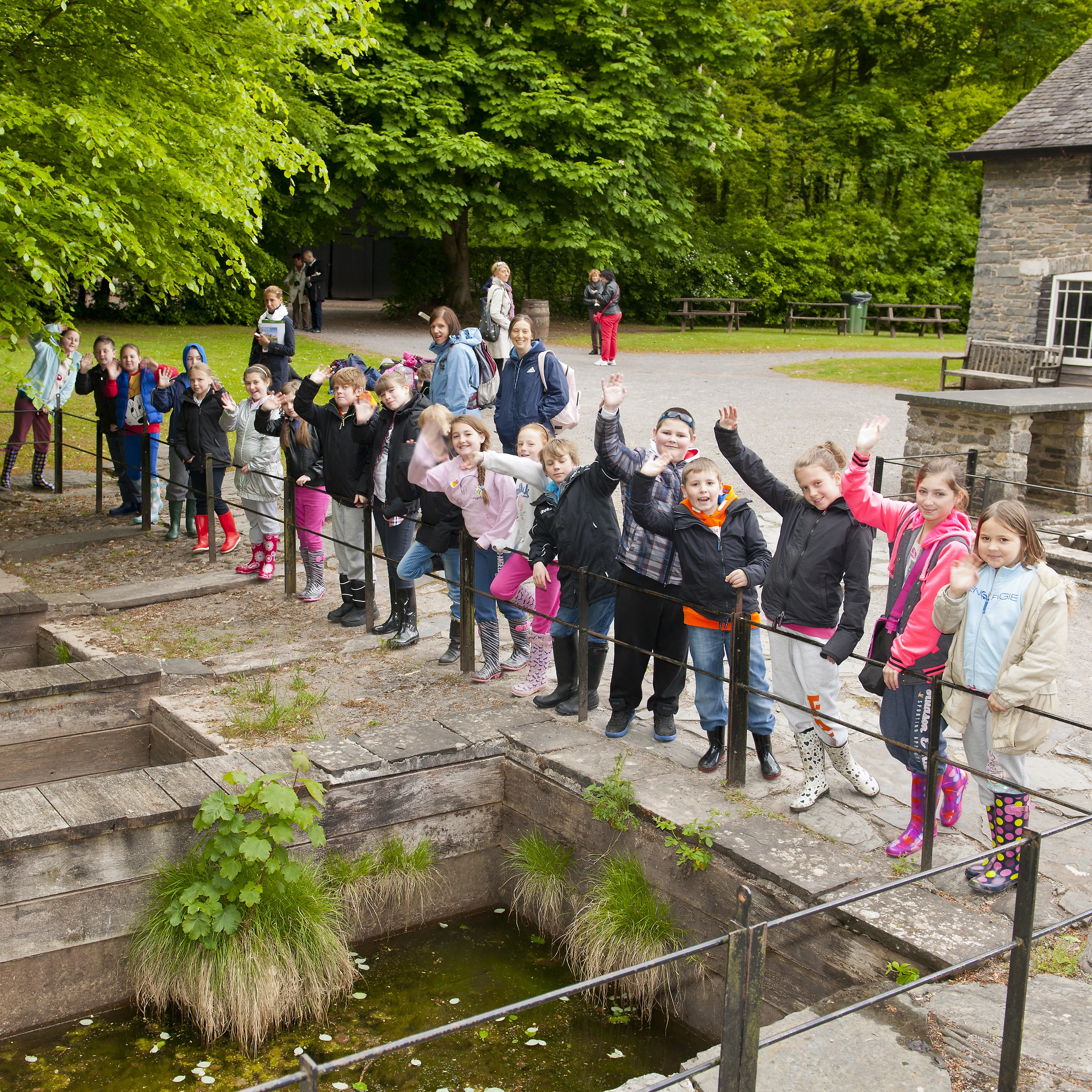Wel, ma gwyliau haf arall wedi hedfan heibio, ac mae hi bron yn amser eto i groesawu grwpiau ysgol yn ôl i Sain Ffagan ar ddechrau flwyddyn ysgol newydd!
Mae’r haf eleni wedi bod bach yn wahanol i mi yma yn Sain Ffagan. Oherwydd y gwaith ail-ddatblygu da ni di colli’r Tŷ Gwyrdd fel adeilad, felly mae’r gweithgareddau natur wedi bod bach mwy nomadig nai’r arfer! Roedd hi’n gyfle neis i mi ddefnyddio ardaloedd gwahanol o’r amgueddfa ac i edrych ar ba fywyd gwyllt sydd i’w ffeindio o amgylch y lle.
Dros fis Awst, ddaeth tua 1000 o bobl i gymryd rhan mewn amrywiaeth o weithgareddau natur o amgylch yr amgueddfa, o archwilio yn y goedwig am fwystfilod bach i’n teithiau ystlumod gyda’r nos. Mae’r teithiau ystlum eleni wedi bod yn hynod o boblogaidd!
Ar ddechrau’r haf naethon ni ail-agor y guddfan adar yn ei leoliad newydd ger ysgubor Hendre Wen. O’n i’n poeni falle byse dim cymaint o adar i’w weld yn yr ardal newydd, ond ar ôl treulio hanner awr yn gwylio’r adar nes i weld 11 rywogaeth wahanol. Gobeithio neith niferoedd tebyg parhau i ymweld â’n bwydwyr o amgylch y guddfan. Mae’r guddfan nawr ar agor bob dydd, felly ar eich ymweliad nesa i’r amgueddfa byddwch yn siŵr i bipio draw i weld be welwch chi!
Ym mis Awst cawsom bach o fraw ar ôl tan fach yn y Tanerdy. Mae’r Tanerdy yn gartref i grŵp o ystlumod Pedol Lleiaf prin iawn. Torrodd tan drydanol bach allan un bore yn yr ystafell islaw ble mae’r ystlumod yn clwydo fel arfer. Diolch byth, nath y tan ddim cydio diolch i ymateb cyflym gan Wasanaeth Tan ac Achub De Cymru. Yn ystod y digwyddiad nath yr ystlumod hedfan i ardal o’r adeilad yn bell o’r tan. Nath y stori hyd yn oed cyrraedd tudalennau wefan y BBC! Diolch i Anwen am y llunie!
Mae’r ystlumod nawr wedi dychwelyd i’w ardal clwydo arferol ac i’w weld yn iawn. Yn anffodus, nid yw’r un peth yn wir am y camera ystlumod a oedd yn yr adeilad. Mae cyfuniad o ddifrod dwr a mwg yn golygu bydd angen camera newydd arnom, gobeithio cyn gynted â phosib!
Mae ystlumod Sain Ffagan i’w weld yn mynd o nerth i nerth! Mae gennym ni 11 o’r 18 rhywogaeth sy’n byw ym Mhrydain yn clwydo yn yr amgueddfa, yn cynnwys yr ystlum Nathusius Pipistrelle sy wedi bod yn clwydo yn 2 o’n hadeiladau. Cyn hyn, dim ond 2 clwyd o’r ystlum yma sy ‘di cael ei ffeindio yng Nghymru. Dyma stori arall eleni nath newyddion!
Eleni cynhaliwyd 3 Taith Ystlum gyda’r Cyfnos yn yr amgueddfa, a bob un yn llawn! Diolch i bawb ddaeth ac ymddiheuriadau i bawb nath trio bwcio ond oedd methu cal lle! Da ni’n bwriadu cynnal 4 taith mis Awst nesa gyda phosibilrwydd o fwy os oes galw! Os daethoch ar un o’n teithiau eleni ac os oes gennych unrhyw adborth, rhowch wybod i ni yma neu trwy anfon e-bost i’r amgueddfa!
Un peth arall, hoffwn roi diolch mawr i’n tîm newydd o wirfoddolwyr sy ‘di bod yn helpu dros yr haf! Trwy gael pâr ychwanegol o ddwylo i helpu gyda digwyddiadau a gweithgareddau, mae’n bosib i ni gynnig gwell profiad ac ymweliad i’n hymwelwyr. Diolch yn fawr i chi gyd!




